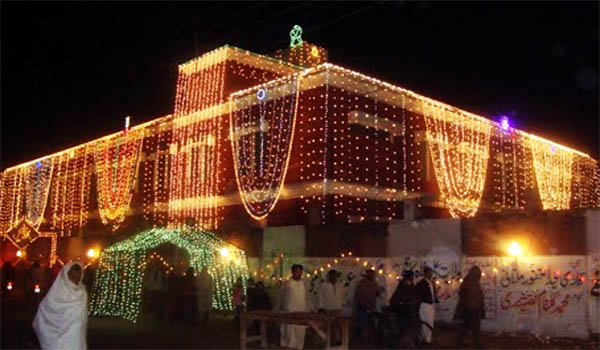
Jalalpur Jattan is a city in District Gujrat in the Punjab province of Pakistan and is about 20 km away from Kashmir. Jalalpur Jattan Tehsil is a subdivision of Gujrat District. On 20 November 2016 Jalalpur Jattan was notified as Tehsil by Chief Minister of Punjab Mian Muhammad Shahbaz Shareef.
Jalapur Jattan has a small cantonment area, which has its importance due to its proximity with the line of control and important strategic cities of Azad Kashmir like Chamb, Kot Jamil and important headworks of river Chenab such as Head Marala.
According to official documents, the population of the tehsil is around 343,834 according to the 1998 census. The total area of the tehsil is around 175,030 acre covering at least 253 revenue estates (villages) and 77 Patwar circles.
On 21 November 2016 Hamza Shahbaz announced up-gradation of Jalalpur Jattan in a public gathering in Jalalpur Jattan Sports stadium. In his speech Hamza Shahbaz also announced construction of Shahbaz Pur Bridge on Chenab River.
When Alexander the Great defeated King Porus, he established two towns, one near Jehlum River and another near Chenab River. The latter, present day Jalalpur Jattan was named Shaklanagar an amalgamation of Greek and Sanskrit words meaning the city of beauty. These cities were settled by people from his multinational armies, which included a majority of Greeks. These Indo-Greek cities and their associated realms thrived long after Alexander's departure. Later, Jalal ud Din Feroze Khilji and his forces stayed here to suppress the invasion of Mongols and he renamed the city to Jalalabad after his name. The name was once again changed to Jalalpur Jattan by the notable Jatts of their time said to be Zabardast Khan and Ajmer Khan.
During Sikh Empire, the town gained significant importance. There is a place in Jalalpur Jattan built by Chandragupta Maurya in 300 BC. Local historians believe that Chandragupta had built a fort in Islam Garh, a suburban village of Jalalpur Jattan. The original name of the village could not be ascertained but the fort became famous as Islam Garh Fort with the passage of time. The fort of Islam Garh had remained under Aurangzeb Alamgir, Ahmed Shah Abdali, and Ranjit Singh and their forces. The fort had been the mint of Maharaja Ranjit Singh of Lahore in 1832. Only some deteriorated remains of the fort exists today.
There is also an ancient city within the territories of Jalalpur Jattan, now a town known as Kula Chor. Excavations in the area revealed that Kula Chor was the mint of the Maurya Dynasty.
In 1908, Jalalpur Jattan was made a municipality or municipal committee, the fully representative body. The city was granted tehsil status in November 2016.
The town has moderate climate. The average temperature of the city is 23.9 °C. During the peak of summer, the daytime temperature shoots up to 45 °C, but the hot spells are relatively short due to the proximity of the Azad Kashmir Mountains. During the winter, the minimum temperature may fall below 2 °C. The rainfall in the city is remarkable, with precipitation even during the parched months. The average rainfall is 802 mm.
The city is famous for its cottage industry of textile and its local sweets called Khatai.
Duhdraye Sharqi (Duhdra East), Mota, Tanda, Bhagowal, Mionwal, Chak Kamala, Lakhan Wal, Khanpur Khokhar, Bheraj, Kotli Kohala, Sheik Chogani Syedan, Jhemat, Kotla sohian, Kot Ranjha, Dhoday Sharif, Kaseb, Wazid, Dhamtel, Jasu saraye, Miran Chak, Tibbi Kissana, Hajiwal, Karianwala, Bhagowal, Chak Qazi, Bagge Chak, Hadka, Awan Sharif, Barila, Ajnala, Shero Chak, Buddhan, Mehmood Abad, Lala Chak, Lilay Kalan, Shadiwaal, Thatta Musa, Kotli Shahani, Geo wanjal, Dhilu Sharqi, Kung Budda, Minuoon waal, Naee Abadees, Bahal pur, Noshehra and Chopala.